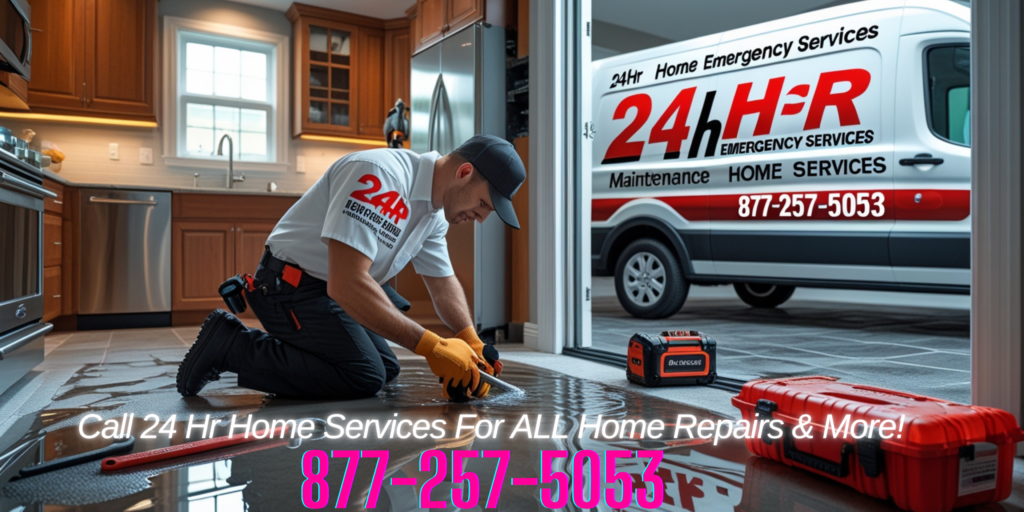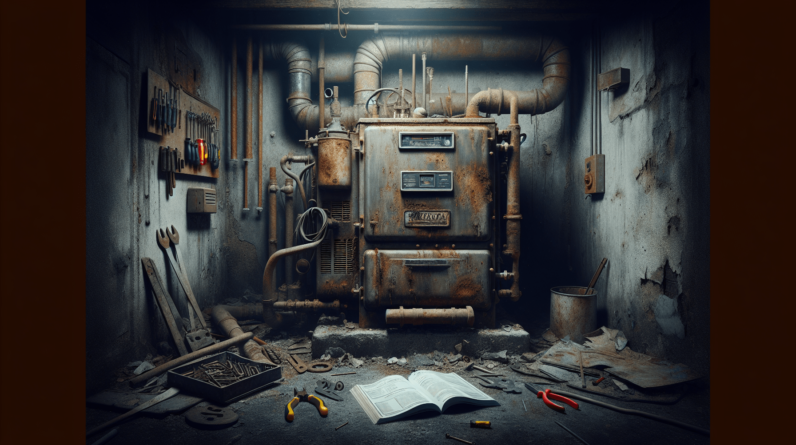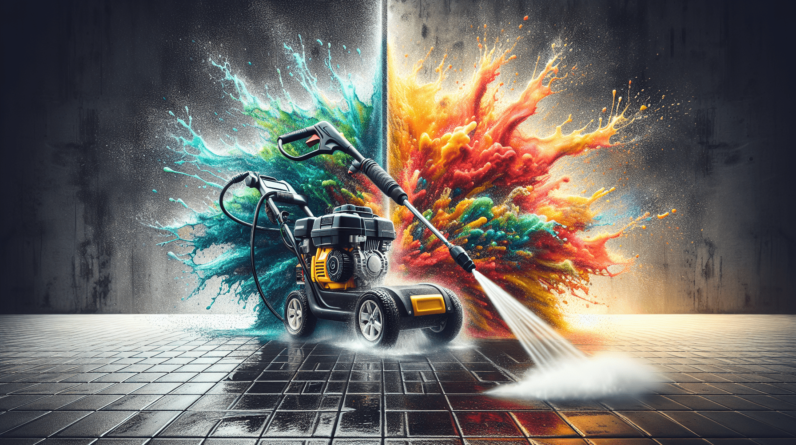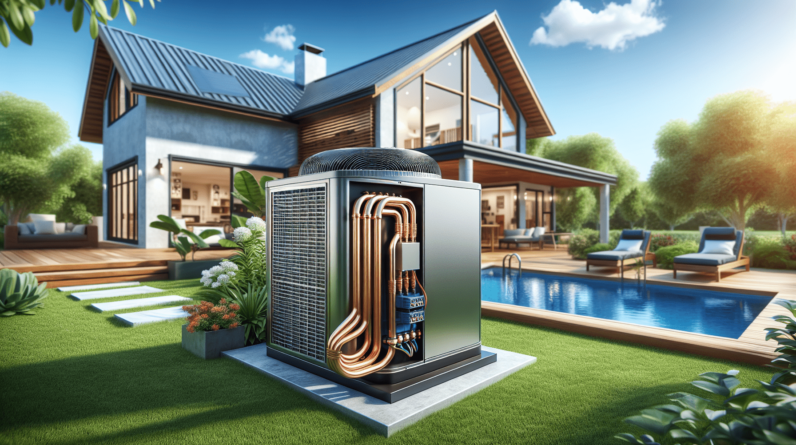
Imagine this scenario: you wake up one morning to find water flooding your bathroom, and you quickly realize that a pipe in your house has burst. Before you panic and call a plumber, let’s consider the possible cause of this disaster. Could it be that a simple clogged pipe caused this catastrophic event? It may seem counterintuitive, but it’s time to explore the possibility and understand the potential dangers lurking within your plumbing system.
Understanding the Impact of Clogged Pipes on Bursting
Explaining the Relationship
When it comes to the potential for a bursting pipe, understanding the impact of clogged pipes is crucial. Although it may seem counterintuitive, a clogged pipe can indeed cause a pipe to burst. This is because clogs disrupt the normal flow of water, leading to increased pressure within the pipes. Over time, this heightened pressure can strain the pipe walls, ultimately weakening them and making them more susceptible to bursting. By understanding the relationship between clogged pipes and bursting, you can take the necessary steps to prevent this costly and damaging issue.
Identifying Common Causes of Clogged Pipes
To effectively tackle pipe bursting, it is essential to be aware of the common causes of pipe clogs. Some of the primary culprits include:
- Food Waste: Dumping large amounts of food waste down the drain can lead to significant clogging in your pipes.
- Grease and Oil: Pouring grease and oil down the drain may seem convenient, but it can solidify and accumulate over time, causing stubborn clogs.
- Hair and Soap Scum: In bathroom pipes, a common cause of clogging is the accumulation of hair and soap scum.
- Tree Root Intrusion: In outdoor plumbing systems, tree roots can invade pipes, obstructing the flow of water and leading to clogs.
- Foreign Objects: Accidentally flushing non-flushable items or objects down the toilet can lead to severe clogs.
By understanding these common causes, you can take proactive measures to prevent clogs and ultimately reduce the risk of bursting pipes.
Highlighting Potential Risks
The presence of clogged pipes poses various risks that can escalate and lead to pipe bursting if left unaddressed. Some of the potential risks include:
- Water Damage: When a pipe bursts, it can cause significant water damage to your property. This can result in costly repairs and the potential loss of valuable belongings.
- Mold Growth: When water leaks from a burst pipe, it creates a damp and humid environment that is conducive to mold growth. Mold can cause health issues and further damage to your property.
- Structural Damage: A burst pipe can weaken the structural integrity of your property, leading to costly repairs and potential safety hazards.
- Increased Water Bills: Clogged pipes often lead to decreased water flow efficiency. This can cause your water bills to skyrocket as you spend more money on wasted water.
By understanding the potential risks associated with clogged pipes, you can better appreciate the importance of taking preventative measures and promptly addressing clogs to avoid pipe bursting.
The Process of Pipe Bursting
Exploring Pipe Materials and Construction
Before delving into the effects of clogging on bursting, it is helpful to understand the different materials and construction methods used in pipe systems. Common pipe materials include PVC (polyvinyl chloride), copper, and galvanized steel. Each material has its own set of advantages and weaknesses when it comes to handling pressure and resisting corrosion.
Pipes are typically constructed using a series of joints that connect individual segments. These joints are crucial for maintaining the strength and integrity of the pipe system. However, they can also be susceptible to clogs if debris or sediment accumulates around them.
Understanding Water Pressure Dynamics
Water pressure is a fundamental concept to grasp when discussing bursting pipes. Water pressure is the force exerted by water against the walls of the pipes. It is influenced by various factors, including the elevation of the water source, pipe diameter, and the volume of water flowing through the pipe.
When a pipe is clear and flowing smoothly, the water pressure inside is relatively stable. However, when there is a clog, the water pressure can increase significantly. This heightened pressure can place excessive stress on the pipe walls, potentially leading to bursting if left unresolved.
Effects of Clogging on Water Pressure
Clogged pipes disrupt the normal flow of water, causing a buildup of pressure within the pipe system. As the water tries to pass through the clog, it encounters resistance, leading to increased pressure downstream from the clog. This heightened pressure places stress on the pipe walls, making them more susceptible to bursting.
Furthermore, if the clog causes a partial blockage, it can lead to erratic water pressure fluctuations. These fluctuations create a back-and-forth effect on the pipe, further weakening the walls and increasing the risk of bursting.
Understanding the effects of clogging on water pressure is essential for comprehending the potential dangers and taking appropriate preventive measures.
Effects of Pipe Clogging
Reduced Flow Capacity
One of the primary effects of pipe clogging is reduced flow capacity. As the clog obstructs the water flow, the volume of water that can pass through the pipes is significantly diminished. This reduction in flow capacity can lead to inefficient plumbing systems, longer wait times for running water, and decreased overall water pressure.
Increased Pressure Buildup
Clogged pipes create a bottleneck effect, restricting the smooth flow of water. As the water continues to flow into the clogged area, the pressure builds up, exerting force on the pipe walls. This increased pressure can strain the walls and gradually weaken them, leading to the potential for bursting.
Corrosion and Degradation
When pipes are clogged, the accumulation of organic matter, minerals, and other debris can contribute to corrosion and degradation of the pipe material. Over time, the clogged substances eat away at the pipe walls, making them thinner and more vulnerable. This corrosion and degradation further exacerbate the risk of pipe bursting.
Temperature Fluctuations
Clogged pipes can also lead to temperature fluctuations. When a clog restricts the flow of hot water, it can cause hot spots in the system, leading to uneven distribution of temperature. Additionally, the buildup of stagnant water due to a clog can result in decreased heat transfer, resulting in cooler water than desired. These temperature fluctuations can impact the effectiveness and performance of water heating systems.
Understanding the various effects of pipe clogging is crucial for identifying the signs of clogs and taking prompt action to prevent bursting.
Clogging and Pipe Stress
Understanding Pipe Stress
Pipe stress refers to the strain placed on pipes due to external or internal forces. These forces can include water pressure, temperature changes, ground movements, and mechanical stress. Pipe stress is a normal occurrence in plumbing systems; however, excessive or prolonged stress can lead to structural failures, including bursting.

Effects of Clogging on Pipe Stress
Clogging significantly impacts pipe stress due to the disruption it causes in the water flow. As mentioned earlier, clogged pipes create increased pressure, which places stress on the pipe walls. This additional stress weakens the structural integrity of the pipes, making them more susceptible to failure, including bursting.
Weakening of Pipe Walls
Pipe walls play a crucial role in maintaining the strength and stability of plumbing systems. However, clogged pipes can weaken these walls over time. The accumulation of debris and corrosive substances within the pipes can corrode and degrade the pipe material. Weakened pipe walls are more prone to bursting, especially in areas where the stress from clogging is concentrated.
Symptoms and Warning Signs
Water Backflow and Overflows
One of the most obvious signs of clogged pipes is water backflow and overflows. If you notice water coming out of sinks, toilets, or drains when you use another fixture in your home, it could indicate a clog somewhere in the plumbing system. Additionally, overflowing toilets or a gurgling sound when flushing can be signs of a clogged pipe.
Unusual Sounds and Odors
Unusual sounds, such as gurgling or bubbling noises when using fixtures, can signal clogged pipes. Additionally, foul odors emanating from drains or toilets could indicate a buildup of organic matter in the pipes.
Water Discoloration and Contamination
If the water coming from your taps is discolored or contains particles, it could suggest a clog in the pipes. Rusty or brownish water is often a sign of corrosion and a possible clog. Similarly, if you notice an unusual taste or unpleasant odor in your tap water, it could be due to contaminants accumulating in the clogged pipes.
Fluctuating Water Pressure
Fluctuating water pressure is another common symptom of clogged pipes. If you experience sudden drops in water pressure or notice inconsistent flow from different fixtures, it could be indicative of a clog restricting the water flow.
Being aware of these symptoms and warning signs can help you identify clogged pipes early on and take the necessary measures to prevent bursting.
Preventing Pipe Clogs
Proper Waste Disposal
Proper waste disposal is crucial for preventing pipe clogs. Avoid pouring grease, oil, or food scraps down the drain, and dispose of them in the appropriate waste bins instead. Additionally, use drain covers or strainers to catch hair and other debris before they enter the plumbing system.
Regular Cleaning and Maintenance
Regularly cleaning and maintaining your pipes can go a long way in preventing clogs. This includes flushing drains with hot water periodically and using natural or commercially available drain cleaners to break down organic buildup. Plumbing inspections conducted by professionals can also help identify potential clogs and address them promptly.
Avoiding Grease and Oil Buildup
To prevent clogs, it is essential to avoid grease and oil buildup in your pipes. Instead of pouring cooking oil or grease down the drain, allow it to solidify in a container and dispose of it in the trash. By taking this simple step, you can minimize the risk of clogs and reduce the chance of pipe bursting.
Clearing Clogged Pipes
Plunging and Snaking Methods
For minor clogs, plunging and snaking methods can often clear the obstruction. A plunger creates pressure that pushes the clog through the pipe, while a plumbing snake can break up and dislodge stubborn clogs. These techniques are generally effective for localized clogs in sinks or toilets.
Chemical Drain Cleaners
Chemical drain cleaners are another option for clearing clogged pipes. These commercially available products contain chemicals that break down organic matter, allowing it to flow through the pipes. However, caution should be exercised when using these cleaners, as they can be corrosive and may cause damage to the pipes.
Hydro-Jetting Techniques
For severe or persistent clogs, professional hydro-jetting techniques may be required. Hydro-jetting involves using high-pressure water to scour the interior of the pipes, effectively breaking down debris and flushing it away. This method is highly effective in removing obstructions and restoring the flow of water.
Calling for Professional Help
When to Seek Professional Assistance
While minor clogs can often be resolved using DIY methods, there are instances when professional help is necessary. If you have tried plunging, snaking, or chemical drain cleaners without success, it may be time to enlist professional assistance. Persistent clogs, recurrent issues, or signs of more extensive plumbing problems should also prompt you to call in the experts.
Benefits of Professional Pipe Cleaning
Professional pipe cleaning offers numerous benefits beyond what can be achieved through DIY methods. Professionals have the knowledge, experience, and specialized tools to tackle even the most stubborn clogs effectively. They can identify the underlying causes of clogs, address them comprehensively, and provide long-term solutions to prevent future issues.
Inspections and Repairs
In addition to clearing clogged pipes, professionals can conduct thorough inspections of your plumbing system. This allows them to identify any potential weaknesses or damage that may lead to pipe bursting. If necessary, they can perform repairs or recommend replacements to ensure the integrity of your plumbing system.
Repairing Burst Pipes
Shutting Off Water Supply
If a pipe bursts, one of the first things you should do is shut off the water supply. This helps minimize further water damage and prevents additional stress on the compromised pipe. Locate the main water shut-off valve in your home and turn it off to stop the flow of water.
Temporary Fixes and DIY Solutions
In certain situations, temporary fixes or DIY solutions can help mitigate the damage caused by a burst pipe until professional help arrives. Wrapping the affected area with rubber or silicone tape can provide a temporary seal, reducing water leakage. However, these fixes are temporary and should be followed up with professional repairs or replacements.
Professional Pipe Replacement
Repairing a burst pipe often involves professional pipe replacement. Depending on the extent of the damage and the condition of the existing plumbing system, professionals can recommend and install new pipes that are more resistant to clogs and bursting. This ensures the long-term reliability and functionality of your plumbing system.
Conclusion
Understanding the connection between clogged pipes and bursting is crucial for homeowners and property owners alike. By being aware of the common causes of pipe clogs and the potential risks associated with them, you can take the necessary preventive measures to avoid costly repairs and water damage. Regular maintenance, proper waste disposal, and prompt action when signs of clogs arise are essential for maintaining the integrity of your plumbing system. With the knowledge and proactive approach outlined in this article, you can ensure the smooth and efficient functioning of your pipes and minimize the risk of pipe bursting. So remember, stay vigilant, take prompt action, and keep your plumbing system flowing smoothly.






